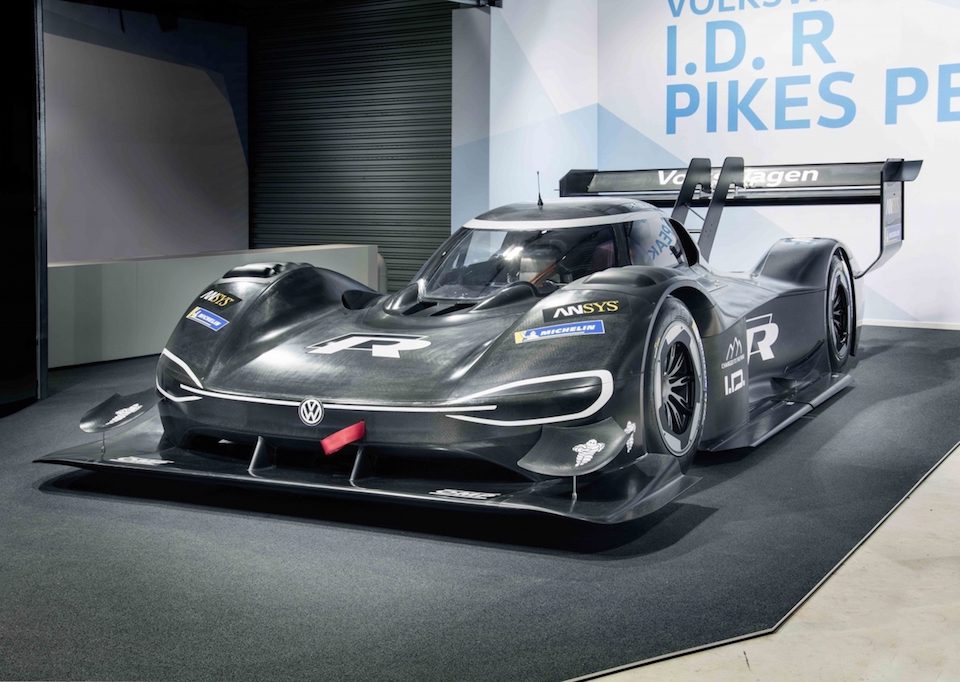Volkswagen, the German automotive manufacturing company, has unveiled a purpose built supercar, the I.D. R Pikes Peak electric, to compete in the Pikes Peak International Hill climb in Colorado Springs next month. With only a short time-frame to develop the car, the team used 3D printing extensively to prototype components.
The Pikes Peak International Hill Climb is an automobile race to the summit of Pikes Peak in Colorado, USA which takes place yearly. With the summit at an air-thinning 14,114-feet, the course record for an electric vehicle (EV) is currently just over 8 minutes and 57 seconds. The race is also known as The Race to the Clouds and takes place on June 24th 2018.
This year, Volkswagen, the German car manufacturer, has designed an automobile to compete in the climb called the I.D. R Pikes Peak. Due to the conditions of the race, its design is nothing like the cars you see zooming up and down the autobahn.
Instead, the fully-electric car has an extreme aerodynamic setup to cope with the high altitude and makes use of computational fluid dynamics. The combined driver-car weight is below 2,425 pounds.
With vehicle’s two electric motors produces 680 horsepower and 479 lb-ft of torque, resulting in a 0 to 60mph time of just 2.25 seconds. This puts the car’s acceleration at slightly faster than Formula 1 and Formula E vehicles.
“Volkswagen’s goal is to reach the pinnacle of electromobility with the I.D. family. The hill climb on Pikes Peak will definitely be a real acid test for the electric drive. Customers have always benefitted from the findings made in motorsport, and we expect to take these findings and use them as a valuable impetus for the development of future I.D. models,” said Dr. Frank Welsch, Volkswagen Member of the Board of Management with responsibility for Development.
Finding the Balance Between Energy Capacity and Weight
The I.D. R was only approved in August 2017, meaning rapid component prototyping was an essential part of the design and build. As a result, the team relied on 3D printing to prepare the car within the limited time frame.
“We printed about 2,000 parts. In doing so, we saved a lot of time,” explains Dr. Hervé Dechipre, one of the project’s computational fluid dynamics engineers.
Relying on electric power, rather than a combustion engine, should mean the car can keep constant power as it makes the climb. As the track is so high above sea level, the car needs a lot of downforce to enable it to make corners in the thin mountain air. This is where the large rear wing is useful as it compensates for the 35% downforce loss compared to a track at sea level.
Volkswagen explains in a press release that unlike regular racing cars, the focus of the I.D R Pikes Peak design was the balance between weight and energy capacity, rather than maximum performance.
If the balance is right, the car should make it up the 4,720 vertical-foot climb and around 156 corners in less than 8:57.118 — the record set two years ago by Rhys Millen. To do this, Volkswagen has enlisted the help of driver Romain Dumas who has seen three victories at Pikes Peak.
Find out more about the race by following Volkswagen on Twitter. If you’re in Colorado Springs, the Pikes Peak Hill Climb takes place June 24th, 2018.
Source: Press Release

Website: LINK


